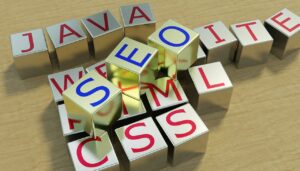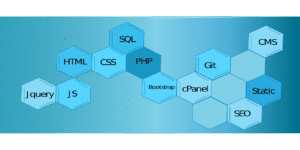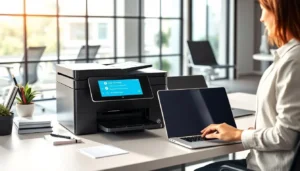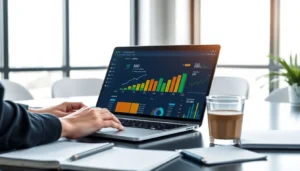Introduction
If you want your website to be found online, understanding SEO is a must. Search Engine Optimization helps your site show up higher in search results, attracting more visitors. As more people turn to Google and other search engines for answers, knowing how SEO works can boost your business or blog.
SEO isn’t just some tech jargon — it’s a crucial part of online success. With the ever-changing world of digital marketing, staying up-to-date with SEO basics keeps your site competitive. Trends keep shifting, so knowing the core principles helps you adapt and grow over time.
What Is SEO? Understanding Search Engine Optimization
Definition of SEO
SEO stands for Search Engine Optimization. It’s the process of making your website attractive to search engines so they rank it higher in results. When your content is optimized, it’s more likely to appear when people search for related topics. Think of SEO as a way to tell search engines, “Hey, I have relevant, valuable content for your users.”
Why SEO Matters for Digital Presence
Getting on the first page of Google can make or break your online success. Higher rankings lead to more clicks, more trust, and ultimately more sales or followers. Did you know that over 75% of people never scroll past the first page of search results? That’s why organic search traffic is key for long-term growth. Without SEO, your site risks remaining invisible in a crowded digital scene.
How Search Engines Work
Search engines like Google use bots to explore the web, known as crawling. These bots view your pages and add important info into a giant database, which is called indexing. When someone searches, the engine looks through this index and ranks pages based on relevance and quality. It’s like a librarian rapidly finding the best books for your query, using complex algorithms to decide what’s most helpful.
Key Components of SEO
On-Page SEO
On-page SEO involves improving your website itself. This includes adding relevant keywords to your content, using proper headers, and crafting clear URLs. Also, making sure tags such as meta description and title tags are optimized helps search engines understand your content better. Keep in mind, content should be useful for visitors, not just stuffed with keywords.
Off-Page SEO
Off-page SEO builds your site’s authority through links from other websites. Backlinks act as votes of confidence, showing search engines you’re trustworthy. Social signals, like shares and mentions, also help boost your reputation. Think of off-page SEO as your site’s reputation in the digital world. The more reputable sites link to you, the higher you can climb in search rankings.
Technical SEO
Technical SEO makes sure your website functions smoothly for both users and search engines. Fast loading times, mobile friendliness, and security (HTTPS) are essential. Structured data, like schema markup, helps search engines interpret your content more precisely. If your site isn’t easy to crawl or loads slowly, your rankings can suffer. Prioritizing technical health pays off in visibility.
Content Strategy in SEO
Content is king because good content attracts visitors and keeps them engaged. Creating helpful, relevant articles, videos, or infographics fills the gaps in what your audience seeks. Keyword research guides your content planning, ensuring you’re targeting the right topics. Quality content encourages sharing and earns backlinks, both of which boost SEO.
SEO Best Practices and Strategies
Keyword Research and Optimization
Start by identifying phrases your target audience searches daily. Use tools like Google Keyword Planner, SEMrush, or Ahrefs to find popular keywords. Focus on long-tail keywords — these are specific and often less competitive, making it easier to rank. Always match your content to user intent — are they looking to buy, learn, or compare?
Link Building Techniques
Earning backlinks the right way is vital. Guest blogging, partnerships, and creating share-worthy content can help. Avoid black-hat tactics like buying links or spammy SEO tricks, which can get your site penalized. Building genuine relationships with other webmasters creates a strong link profile.
User Experience and SEO
User experience (UX) affects how visitors interact with your site. Clean navigation, fast load times, and mobile-friendly design make visitors stay longer. The more positive engagement your site gets, like longer visits and lower bounce rates, the better your rankings. Google notices when users find your content helpful and easy to use.
Local SEO
To attract nearby customers, optimize your pages for local searches. Create a Google My Business listing, include your location in the content, and gather reviews. Consistent local citations and accurate contact info build credibility within your community. Local SEO helps your business stand out in neighborhood searches.
Measuring and Analyzing SEO Performance
Key SEO Metrics and KPIs
Track your organic traffic, bounce rate, conversion rate, and keyword positions regularly. These metrics reveal what’s working and where to improve. For example, a rise in organic visits signals your SEO efforts are paying off.
SEO Tools and Software
Popular tools like Google Analytics and Search Console offer deep insights into your site’s health. SEMrush, Ahrefs, and Moz help identify keyword opportunities and backlink profiles. Using these tools equips you with data to refine strategies.
Continuous Improvement and SEO Audits
Regular audits catch issues like broken links or slow page speed. Staying updated on Google algorithm changes helps you adapt quickly. SEO isn’t a one-time task but an ongoing process of optimization and learning. The more you analyze, the better your rank will stay over time.
Conclusion
Mastering SEO starts with understanding its core parts — on-page tweaks, off-page authority, technical health, and content quality. Remember, SEO is a journey, not a one-time fix. Consistency in optimizing your site, creating valuable content, and tracking results makes all the difference.
Begin with thorough keyword research, focus on user experience, and stay current with industry updates. With time and effort, your website’s visibility climbs, leading to more visitors, higher conversions, and sustainable growth. Keep pushing, and soon your site will rank where your audience can find it.



































































































